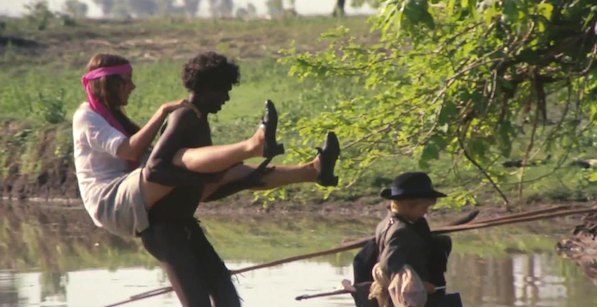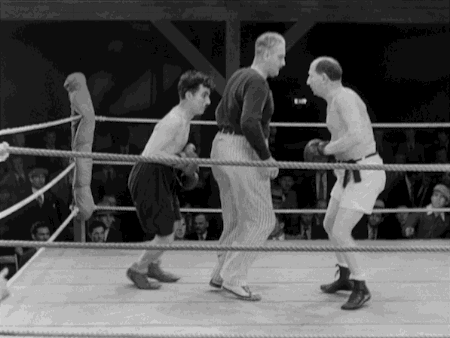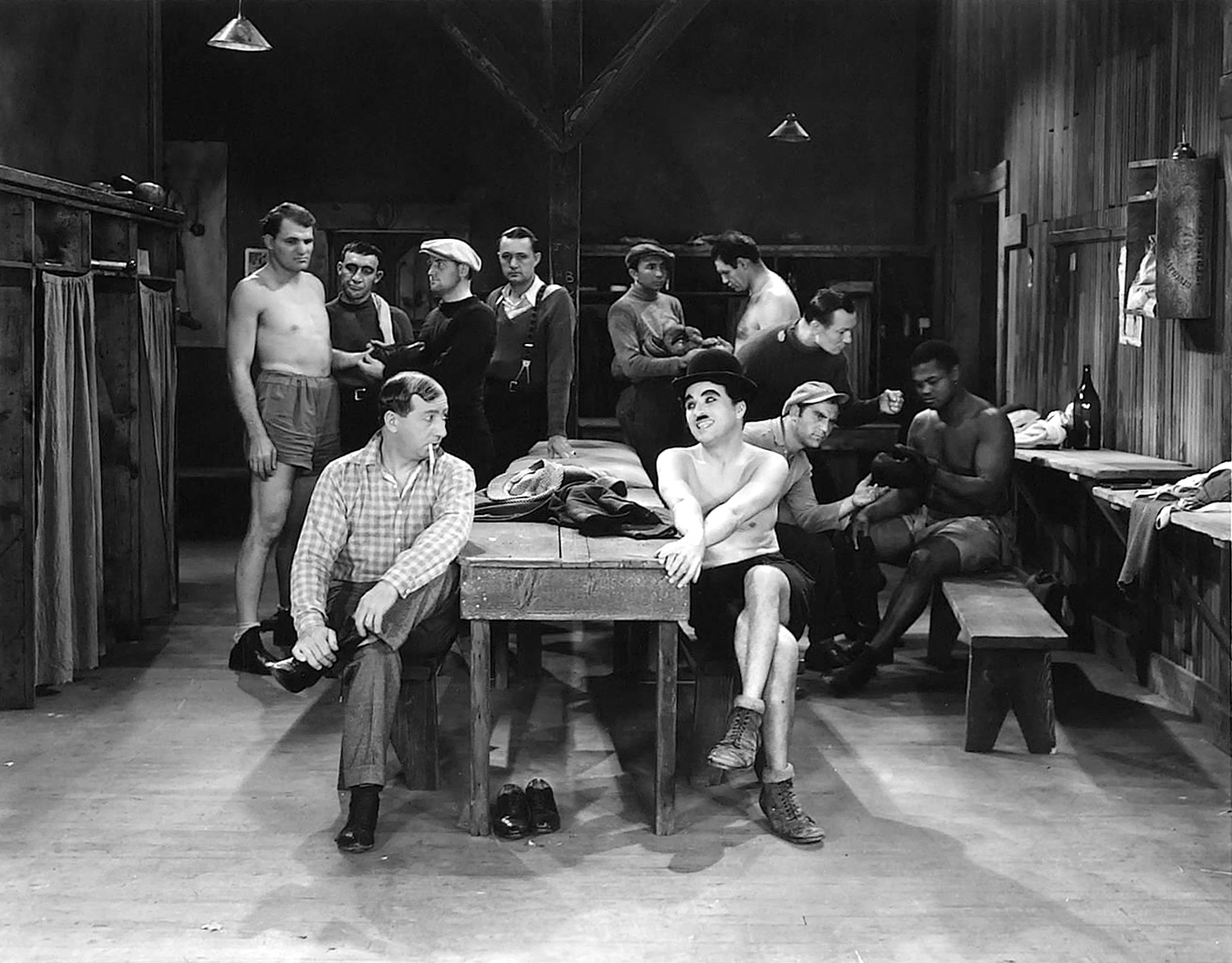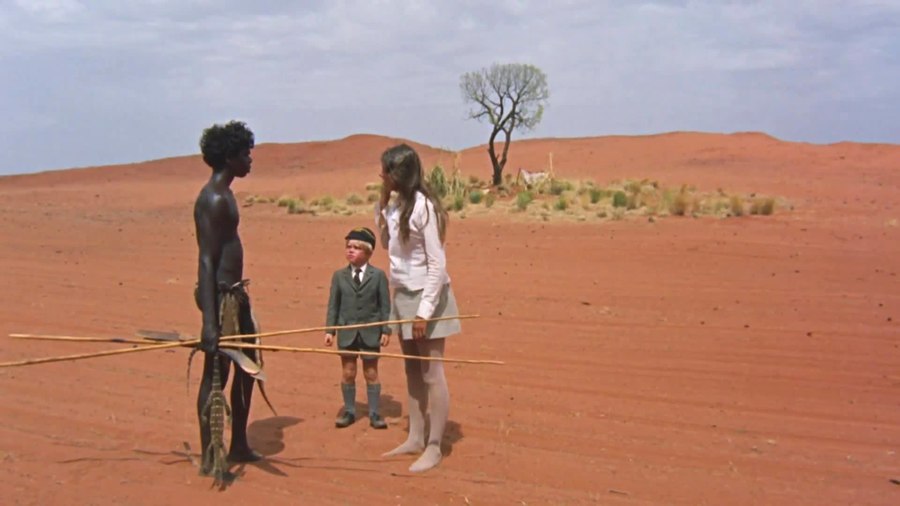[Editor’s note: This article features two from a selection of “Fishes out of Water” films from Criterion Collection via Hulu.]
There’s nothing funny about a fish out of water. Flapping this way, jumping that, its eyes aghast, its mouth agape and its gills beating for breath as it fights for dear life in desperate need of its life source. As far as idioms go, however, fishes out of water are the stuff of drama: there might be a case to be made about how all forms of narrative tension involve, at their most essential, a new, challenging, perhaps dangerous context. A soldier behind enemy lines, an innocent man on the run, a black woman on a segregated bus in 1950s America: there’s nothing at stake in someone being thoroughly within their comfort zone, and there’s everything at stake in them being found or forced outside it.
Hence film noir, whose protagonists have often been amateur sleuths, in over their heads, dealing with a newly discovered underworld wherein the line between titillation and murder is thinner than a bad guy’s toothpick. Hence horror, in which ordinary people are confronted with the extraordinary, the supernatural, the unthinkable made flesh, violently dragged out of their mundane existence (a sleepy suburb, a routine vacation, an old dark house) into scenarios too traumatic to imagine (a serial killer, a kidnapper, things that go bump in the night).
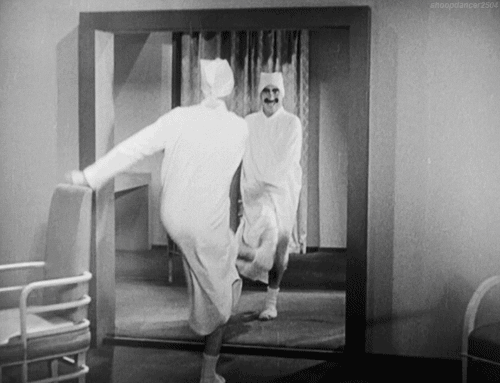
And hence comedy, whose complex inner workings riff upon the inherent fluidity between the familiar and the unfamiliar, the real and the uncanny, the authentic and the substitute. Mistaken identities abound in comedy. Doppelgängers, deception, duality. Think of Groucho Marx trying to out-dance an impostor in Duck Soup (1933), of the obviously funny juxtaposition of Arnold Schwarzenegger and Danny De Vito in Twins (1988; the joke is they look nothing alike!), and of that curious moment in 1994 when WWE wrestler The Undertaker was reduced from a prince of darkness to a kitschy clown because he had to prove his own identity against a barely convincing lookalike.
Charlie Chaplin’s comedies are all based upon variants of such a premise. An overworked, poverty-stricken waiter is mistaken for a restaurant’s hired entertainment for the night in Modern Times (1936). A smalltime barber is mistaken for a fascist despot in The Great Dictator (1940). In all Chaplin films, in fact, the charm of his Little Tramp persona is that at every narrative point he’s up against it, out of his depth, struggling indefatigably against a cruel network of employers, landlords and cops.
Of all these many Chaplin-esque moments, though, the most quintessential and memorable might be that in City Lights (1931), a film in which the Little Tramp must brave a series of perilous scenarios in order to make ends meet and help his blind companion (Virginia Cherrill). One such scenario—the scene that most commonly doubles for the film itself, and perhaps for the director’s body of work as a whole—involves Chaplin being entered into a boxing match with a much more sizable prizefighter (Hank Mann). Not a boxer himself, our hero must use whatever wits he has in order to have even a chance of not being killed by his pugnacious foe. The resulting dual unfolds like a balletic folly: again and again, the Tramp positions himself between the referee and his opponent, hopping left and right in order to frustrate, flummox and, where possible, get a quick jab in, wearing the other guy down just enough to put in a finishing blow.
In this scene and many others, Chaplin demonstrated his acute ability to strip surrealism of all its manifesto pretense to give political comment in popular, universal form. Indeed, the juxtaposition of one thing against another thing—such as a humble, hapless, homeless man and the brawny athletic juggernaut expected to knock seven shades of sugar out of him—gets at the very base of the surrealist tenet. Cinema, with its unprecedented combination of photographic verisimilitude and the illusion of things existing temporally as well as spatially, contains an inherently radical potential: to force a connection between a number of otherwise disparate things in order to provoke a synthesis that can in turn be provocative, ambiguous, unusual.
With Chaplin, whose cinematic framing often mirrored the proscenium of vaudeville, the action occurs in one digestible space. But cinema, as we know, is not just the spatial arrangement of actors and props within a single composition. It can also make actors, props and the baggage of meanings signified by each collide with one another by means of montage: one shot follows another shot, the two don’t spatially align and the relationship between them is subsequently made explicit by its very incongruity. On the one hand Eisenstein, on the other Buñuel.
On another still, Nicolas Roeg, the British filmmaker whose best works have pushed at the otherwise clear-cut distinction between a surrealist juxtaposition within a frame (the collision of concepts in a single take) and a surrealist juxtaposition between frames (montage). Performance (1970), the film he shot and co-directed with Donald Cammell, is a riff on switched identities not unlike the aforementioned Groucho Marx gag. In Don’t Look Now (1973), there’s something oddly but palpably amiss in Donald Sutherland and Julie Christie’s mere appearance against the startlingly cold, anachronistic antagonism of Venetian architecture. That film famously splices the past with the present and the present with the future: a love scene seemingly unfolds alongside the couple getting ready to go to dinner afterwards, while the surreal, fleetingly recurrent image of a red cloak shuffling through the city’s alleyways prefigures a decidedly dreadful turn ahead.
It’s Roeg’s first feature as sole director, Walkabout (1971), that the fish-out-of-water scenario is perhaps most vivid. Only, unlike Don’t Look Now after it, Walkabout scarcely has any water at all: two middle-class English siblings, an adolescent (Jenny Agutter) and her younger brother (Luc Roeg), are taken for a picnic by their father to the Australian outback, where he unsuccessfully tries to kill them before offing himself. Left to their own devices, these visibly suburban kids, vulnerable against the unremittingly dry landscape, encounter an Aboriginal youth (David Gulpilil), who leads them to water, food and—perhaps unintentionally—a return to what they would call civilization.
Walkabout is a film better seen than described, not least because of its teasing ambivalence with regard to Roeg’s depiction, perception and forceful juxtaposition of binary opposites: nature and nurture, native and intruder, the social and the private, the communal and the individual, adulthood and youth. All of these collide with one another in numerable and fascinating ways. Two different surrealist techniques, however, stand out. The first is the editorial collision of two images (a branch on a tree, the girl’s pubic bush) whose general semblance forges a third meaning (sexuality as nature). The second is the disquieting-cum-enthralling collision of cultures within a single crab-like camera movement: starting on a close-up of a brick wall—as recognizably a symbol of manufactured urbanism if ever there was one—and then tracking sideways to reveal an expanse of desert behind it. Like Chaplin’s ten-to-two feet, it’s such a simple gesture—and once seen, never forgotten.

